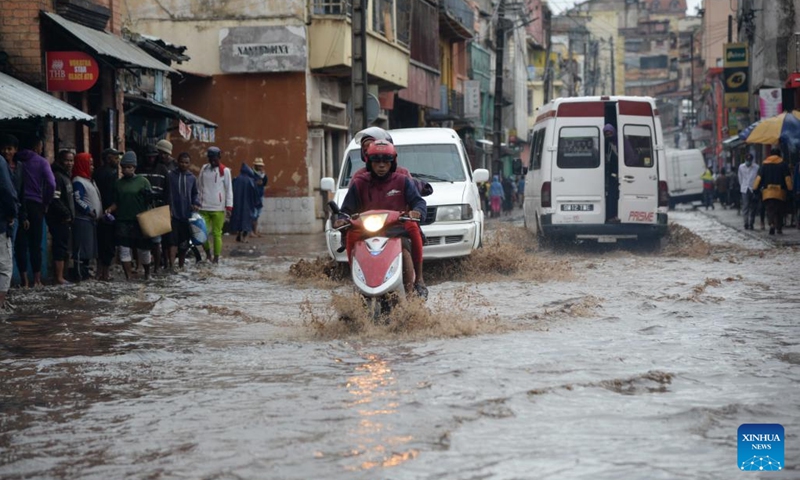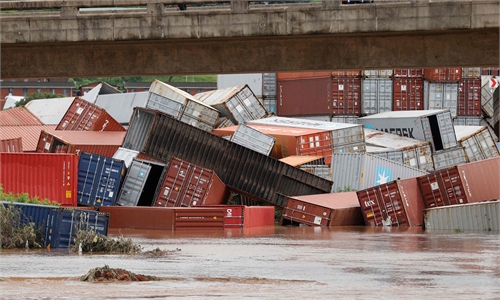UN warns of increase in disasters around globe

A man rides a motorcycle through a flooded road in Antananarivo, Madagascar, on Feb. 6, 2022. A total of 20 deaths were recorded Monday in Madagascar by the Office of Risk and Disaster Management, following the passage of intense tropical cyclone Batsirai Saturday and Sunday.(Photo: Xinhua)
Humanity is suffering from a "broken perception of risk," spurring us into activities and behaviors that cause climate change and a surging number of disasters around the globe, the UN warned Tuesday.In a fresh report, the UN Office for Disaster Risk Reduction, or UNDRR, found that between 350 and 500 medium- to large-scale disasters took place globally every year over the past two decades.
That is five times more than the average during the three preceding decades, it said.
And amid the changing climate, disastrous events brought on by drought, extreme temperatures and devastating flooding are expected to occur even more frequently going forward.
The report estimated that by 2030, we will be experiencing 560 disasters around the world every year - or 1.5 disasters every day on average.
UNDRR said in a statement that the sharp rise in disasters globally could be attributed to a "broken perception of risk based on optimism, underestimation and invincibility."
This, it said, had led to policy, finance and development decisions that exacerbate vulnerabilities and put people in danger.
Ignoring the towering risks we face "is setting humanity on a spiral of self-destruction," UN Deputy Secretary-General Amina Mohammed warned.
Ignoring risks has come at a high price. Disasters around the world have cost roughly $170 billion each year over the past decade, the report found.
But most of that is incurred in lower-income countries, which on average lose 1 percent of their national GDP to disasters each year, compared to just 0.1 to 0.2 percent in wealthier nations.
AFP



